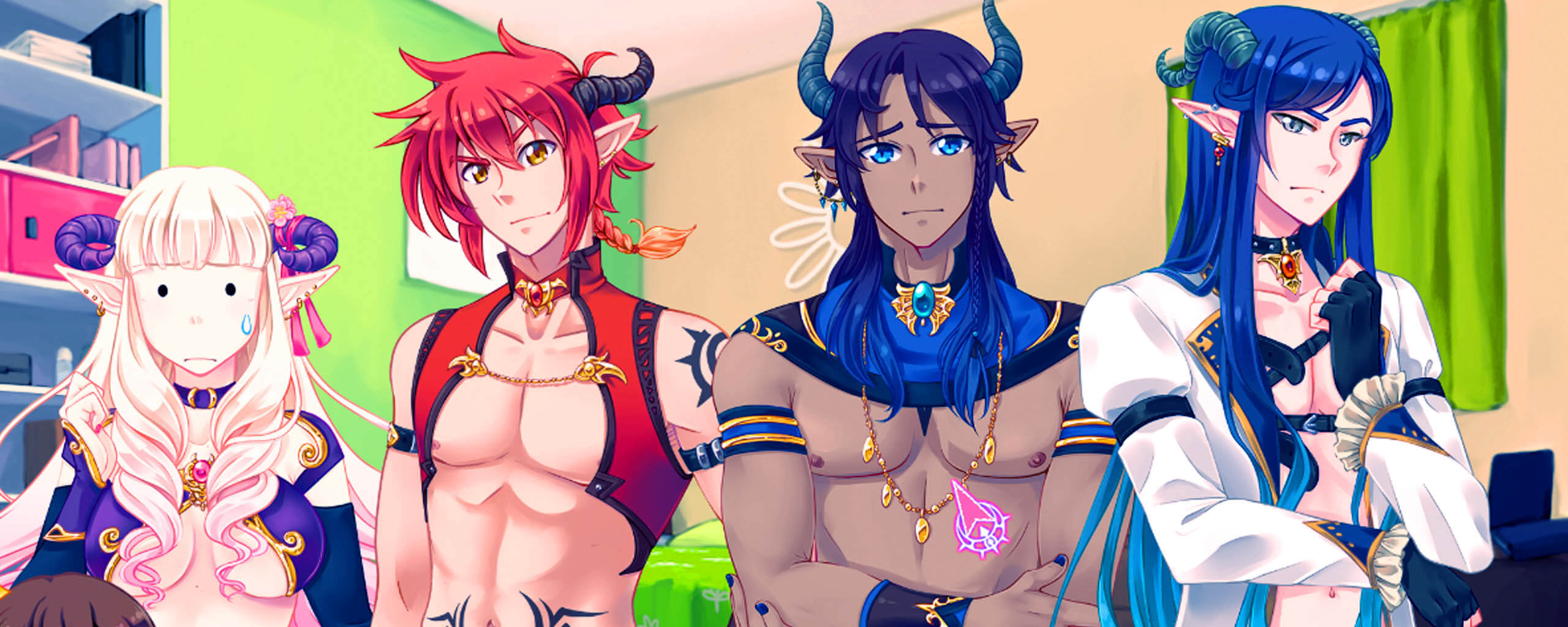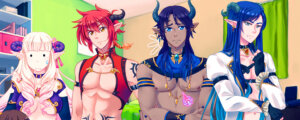The English otome game landscape prior to the mid-2010s can be described with one word: barren. While Japanese developers were releasing dozens of titles per year, official English-language localizations totaled a whopping… one. In 2006, Hirameki International released what is widely cited as the first English otome game localization, Yo-Jin-Bo: The Bodyguards, for PC and Mac, though it was not marketed as an otome game and didn’t get broader recognition as such until years later. For six years, this was the only otome game available in English, until Aksys Games introduced the acclaimed Hakuoki series to an English-speaking audience with the release of Hakuoki: Demon of the Fleeting Blossom on the PlayStation Portable in 2012.
While English releases of otome games developed in Japan were few and far between, indie creators decided to take matters into their own hands. Inspired by romance games for women that offered a refreshing alternative to the plethora of romance narratives in games dominated by the male gaze, indie developers began creating their own English-language otome games.
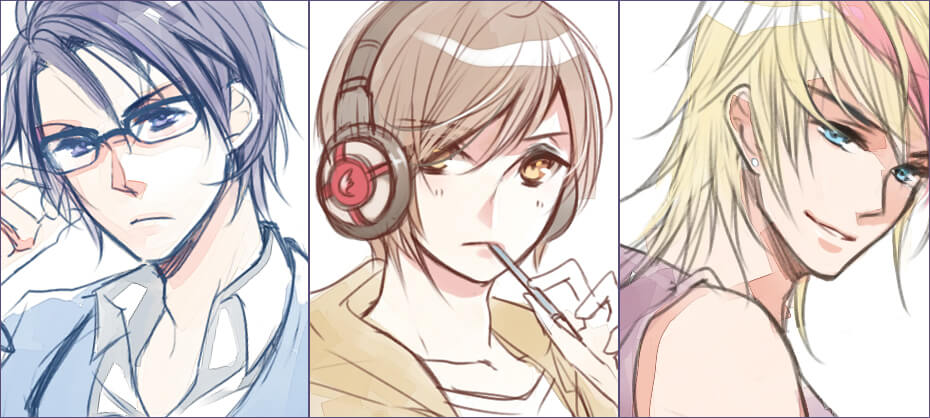
Early English Otome Games
One of the first such releases was the free game RE: Alistair, launched by Sake Visual in February 2010, followed by an expanded version, RE: Alistair++, in April 2010. In it, protagonist Merui has the option to romance one of three male characters, and gameplay consists of a mixture of stat raising and text-based dialogue options, making it, as a whole, very similar in format to otome games that were being released in Japan at that time.
The English fan translation for Konami’s hit otome game, Tokimeki Memorial: Girl’s Side – 1st Love Plus, came out in the same year, fueling interest in Japanese romance games for women. Many other early indie English otome games followed RE: Alistair’s suit, touting visuals inspired by Japanese otome games, anime, and manga, and focusing on female protagonists with a cast of handsome male suitors to romance.
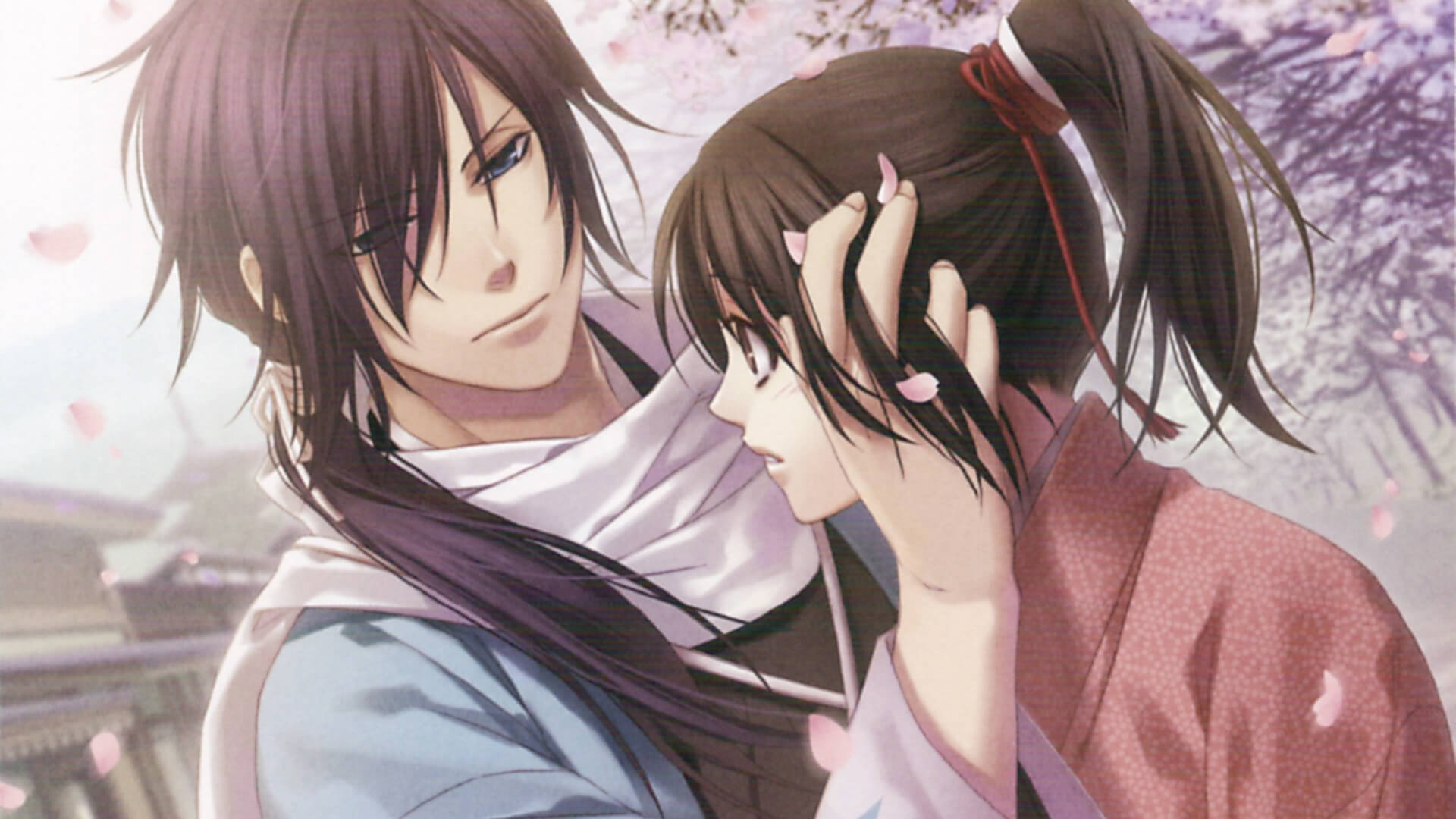
As interest in otome games outside of Japan grew with more indie game releases and localizations of Japanese titles by companies such as Aksys Games, Idea Factory International, and Manga Gamer through the mid-2010s, so did a desire amongst fans to see a more diverse range of player characters, romance options, narrative styles, and graphical formats. What may have begun as a desire to create otome games for an English-speaking audience to fill the void of officially translated titles expanded to encompass responses to common tropes and more varied representations of gender and sexuality.
Inside the Otome Genre
But what is an otome game, really? In Japan, the categorization of otome games follows relatively strict parameters. The term otome itself means “maiden,” traditionally used to refer to a young, unmarried girl, highlighting her femininity and virginity1. When the term came into use in Japanese popular culture in the early 2000s to designate a category of romance games marketed to women, it indicated a clear, specific format: players would assume the role of a female protagonist, often with a name that could be changed by the player, and shape a narrative with either gameplay or text-based options that, when performed “correctly,” would result in the protagonist falling in love and entering a relationship with one of the game’s multiple handsome male romance options.
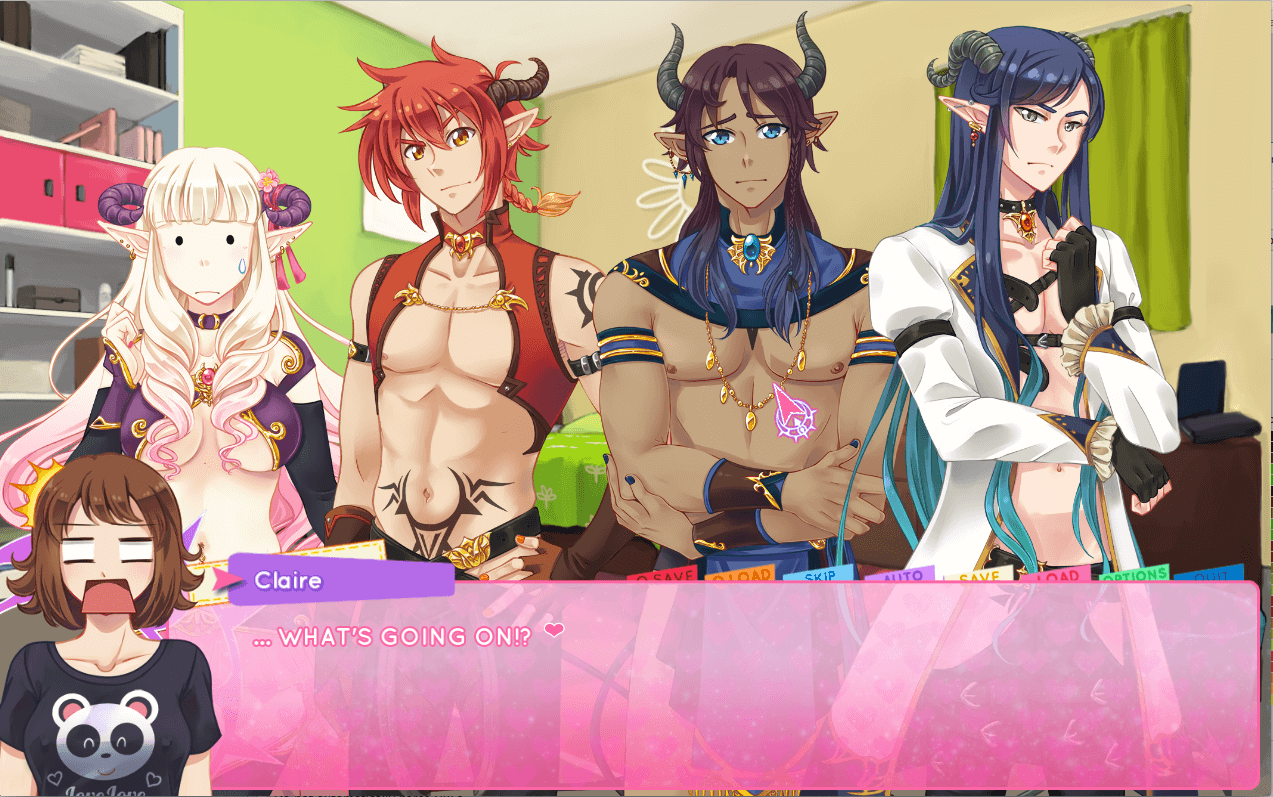
While many indie otome games developed outside of Japan follow similar patterns established by their Japanese counterparts, games such as Cute Demon Crashers seek to address critiques of the heterosexual relationships presented in many otome games. Released for Mac, PC, and Linux in 2015 as part of an annual game jam, Cute Demon Crashers presents players with the chance to negotiate issues of consent in a game featuring sexual content2. In addition, the game has the option to pursue a sapphic encounter, which is something not often seen in traditional otome games.
According to the developer SugarScript, Cute Demon Crashers was created in response to the lack of consent in visual novels aimed at women. I recall it gaining significant buzz when it came out for its impressive visuals and sex-positive premise. It, along with Seduce Me, which was released in the same year with “implied sex scenes” and three female romantic options, are just a couple of early examples of indie otome games that respond to and expand upon the otome game “formula.”
Beyond Otome?
Now, a search for games tagged “otome” on Itch.io reveals a list of over 1,000 results, including games with protagonists (also known as MCs, for “main character”) with selectable pronouns and/or appearance, romanceable characters of varying gender identities and sexualities, and polyamorous route options. POC characters, while not very common in Japanese otome games, also feature frequently as both MCs and romanceable characters in indie otome games.
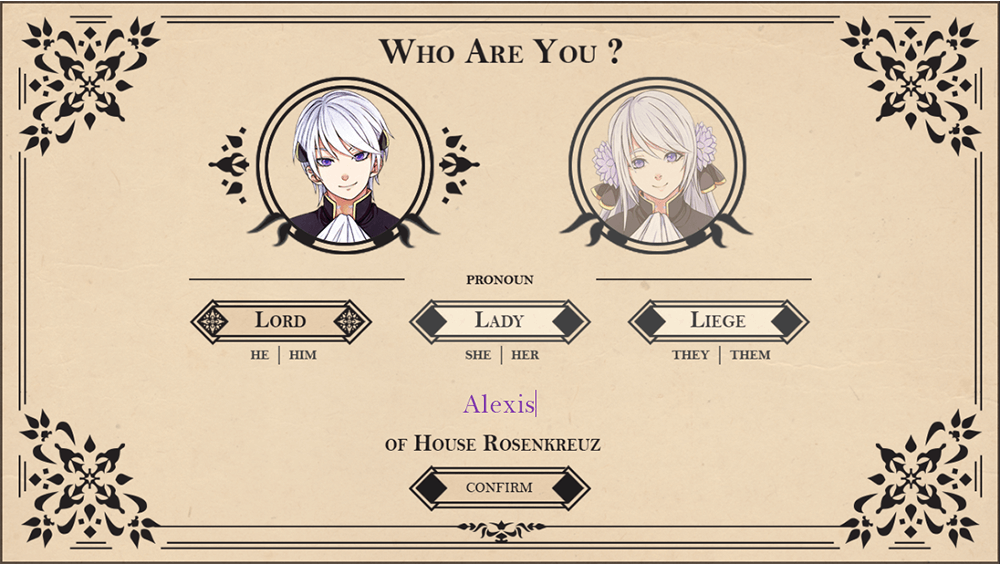
This isn’t to say there aren’t any sex-positive Japanese otome games, or that all Japanese otome games are exclusively heteronormative, but such examples tend to be few and far between in the mainstream market. The Japanese game development scene certainly is not a monolith, but the varied cultural backgrounds of English otome game creators and the diverse market of international fans are ripe for experimentation and addressing gaps, such as a lack of POC characters.
It can’t be overlooked here that indie creators on platforms such as Itch.io and Steam can self-tag their titles. This results both in over-tagging so that a game will appear in as many searches as possible and games being tagged with seemingly contradictory categories. The rise in diversity within the English indie otome game space has also brought increased discussions about what constitutes an “otome game,” versus simply romance or dating simulation.
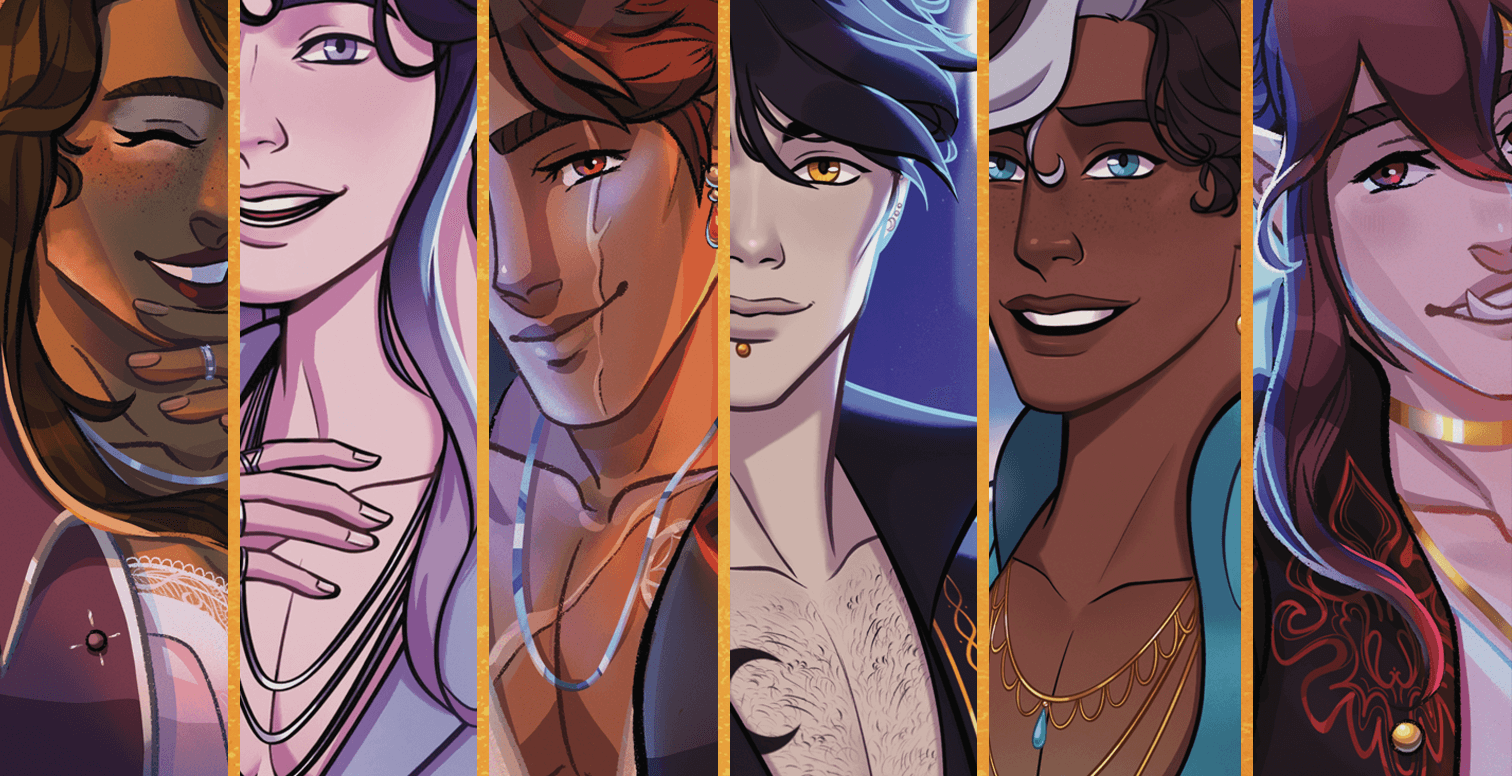
According to the Otome Game Jam, last held from April to June 2023, an otome game must include an option for a female protagonist, romance, and a focus on male-identifying love interests. While this broad definition allows for a variety of protagonists and love interests, some creators felt the need for an even more inclusive term to describe the kinds of games they were making. This led to the creation of the “amare” tag in 2021. While it is beyond the scope of this article to discuss amare in depth, there is an interview with the group behind the creation of the tag that is well worth a read!
Whether or not a certain indie game should be categorized as “otome” may be a point of contention for some, one thing is clear: English-speaking creators have used otome games as a jumping-off point to explore even more diverse depictions of gender, sexuality, and themes. And, while “otome” may be a term originally intended to denote a female audience, the international otome game fandom includes as diverse an audience as the indie English otome games themselves. If so much can happen within a niche game community in less than 10 years, I can’t wait to see what the next 10 will bring.
Sources
- Andlauer, Leticia. “Pursuing One’s Own Prince: Love’s Fantasy in Otome Game Contents and Fan Practice.” Mechademia: Second Arc, vol. 11, no. 1, 2018, pp. 166–83. JSTOR, https://doi.org/10.5749/mech.11.1.0166. Accessed 20 Jan. 2024.
- Ganzon, Sarah Christina. Playing at Romance Otome Games, Globalization and Postfeminist Media Cultures. PhD thesis, Concordia University, 2022, pp. 124.

Featured Sponsor - JAST
The sweetest romance and the darkest corruption, the biggest titles and the indie darlings; for visual novels and eroge, there's nowhere better.
Big thank you to our supporters
From their continous support, we are able to pay our team for their time and hard work on the site.
We have a Thank-You page dedicated to those who help us continue the work that we’ve been doing.
See our thank you page